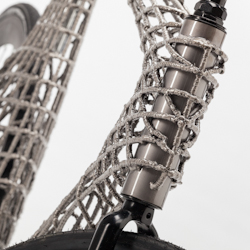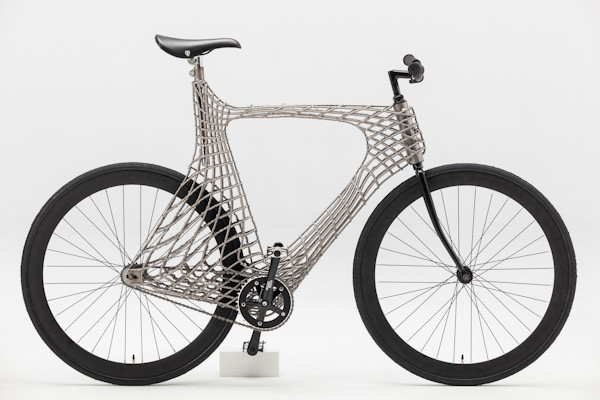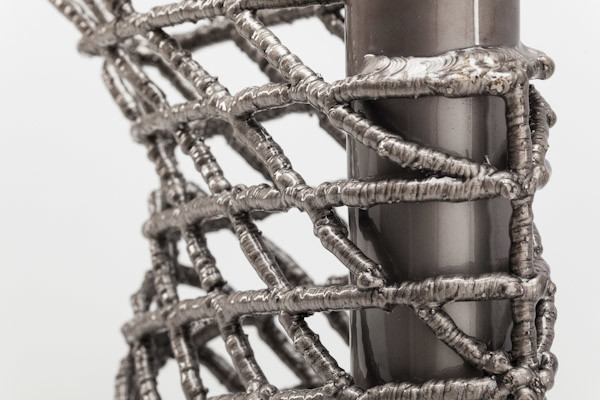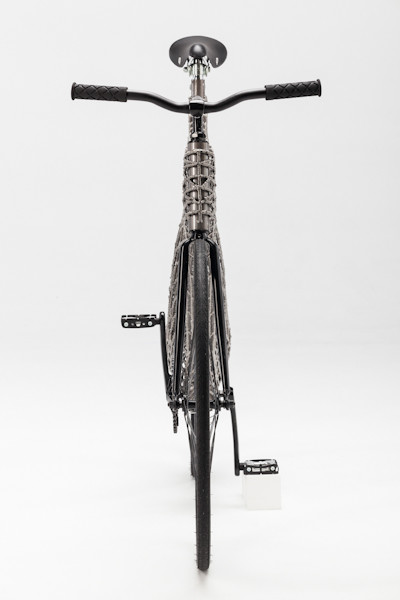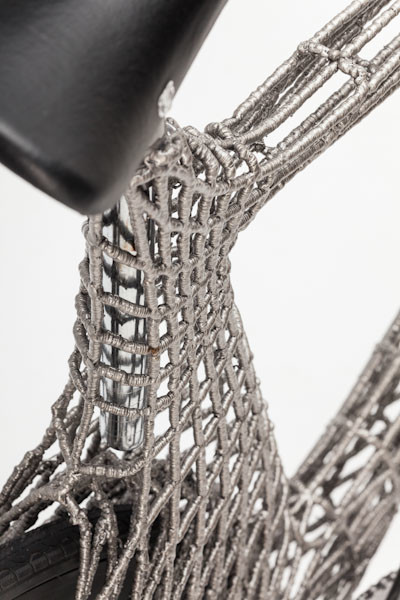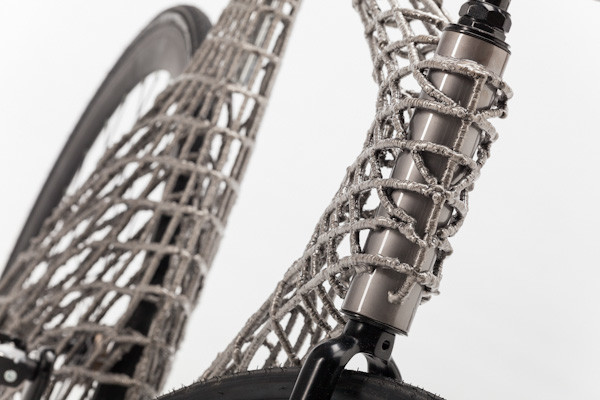While here in North America we’re all excited about the NAHBS celebration of hand-built bicycles, this crazy looking bike would be an excellent candidate for a European Robot Built Bike Show (ERBBS?) if such a thing existed.
Students from TU Delft’s Industrial Design Engineering Faculty in the Netherlands spent three months designing the webbed/net-like frame. The Arc Bicycle was then manufactured from stainless steel by an Amsterdam-based research and development company called MX3D who specializes in multi-axis 3-D printing.
A bicycle was chosen by the students as a test piece due to the complex forces bike frames typically endure- not to mention that Amsterdam’s people absolutely love bikes to begin with. The Arc bicycle is fully functional, check out the video below to see robotic arms building it and one of the students taking it for a spin…
If you’re thinking the Arc’s frame looks like a bunch of welds piled on top of each other, you’re right on the mark. The motivation behind building this bike was to demonstrate the potential within a new method of 3-D printing metal objects using a welding process, a concept the Delft University of Technology has been researching on a broader scope. It is the world’s first bike to be 3-D printed using this new welding-based technique.
MX3D has developed a unique way to use multi-axis robotic arms as 3-D printers, enabling mid-air additive manufacturing of metal or resin objects with no support structures required. This construction method enables a new level of form freedom when manufacturing medium to large scale metal objects.
Last year MX3D announced their intentions to build a 3-D printed steel pedestrian bridge, and the students were invited to use their equipment to build the bike frame. Producing the bike put the print software being developed by MX3D and partners Autodesk and Arcelor Mittal to the test before they attempted to tackle the much larger bridge project. Building the Arc Bicycle also created a tangible product to act as a showcase of MX3D’s capabilities.
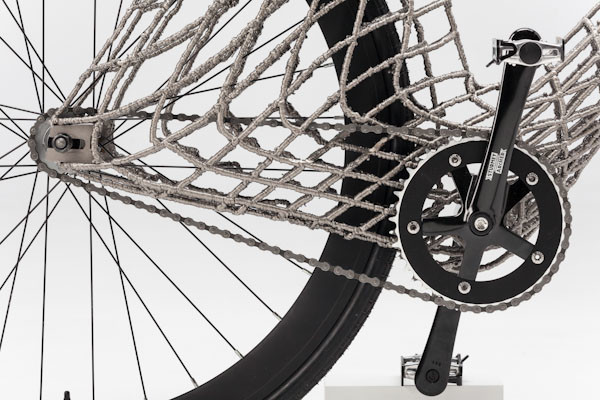
The Arc Bicycle apparently weighs about the same as a traditional steel framed bike, and has been holding up just fine under real-world use on Amsterdam’s bumpy cobblestone roadways.
